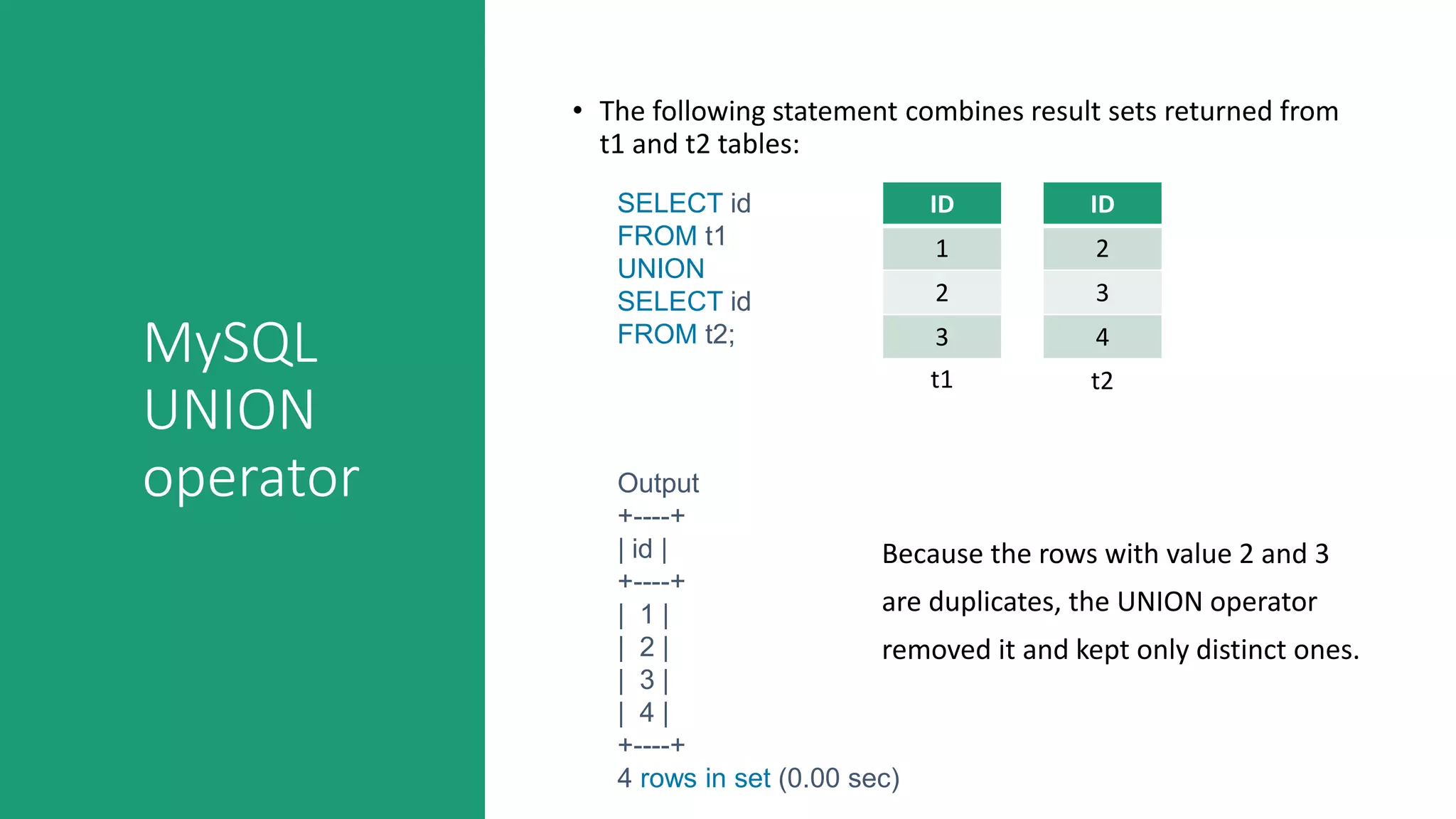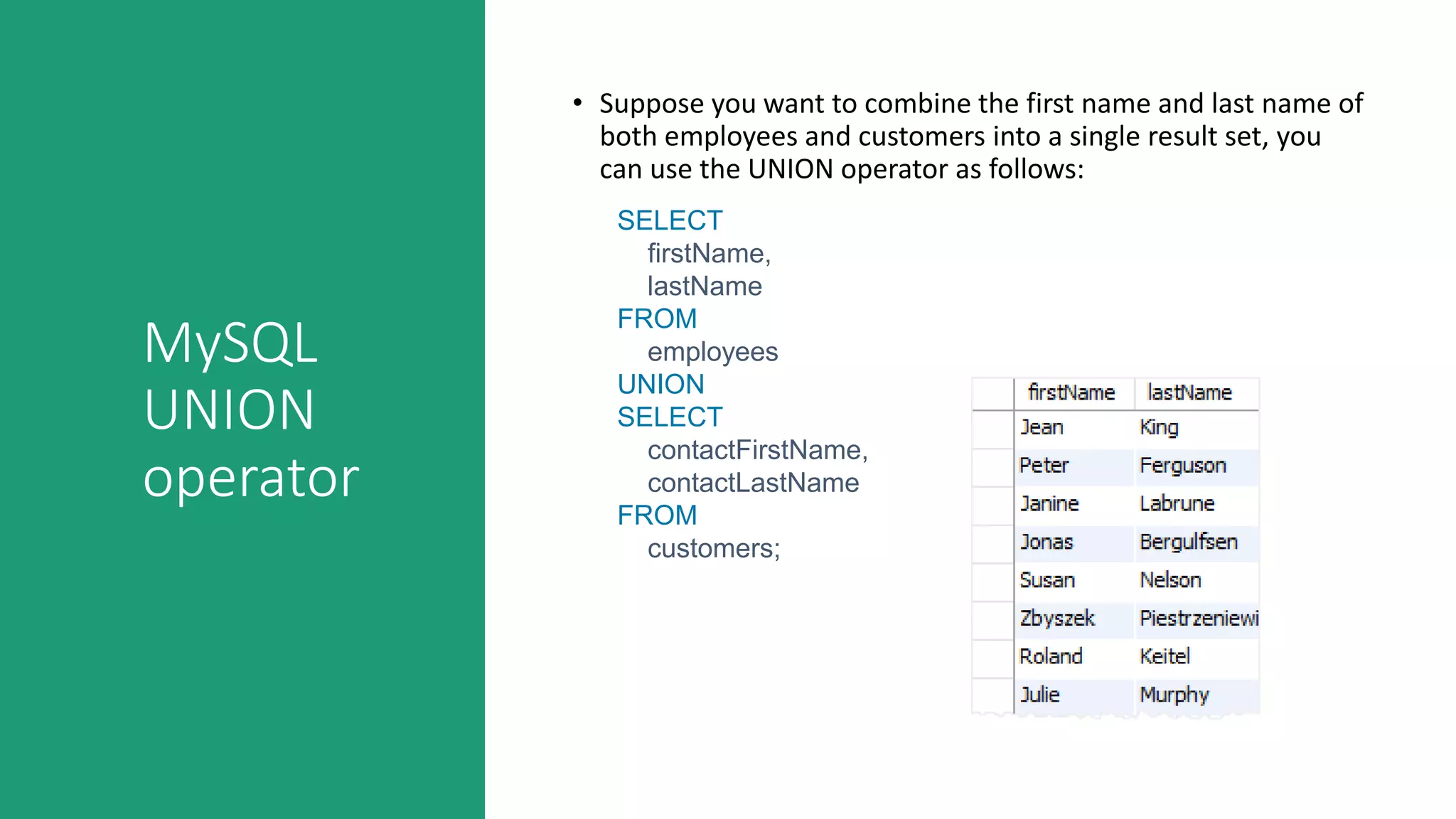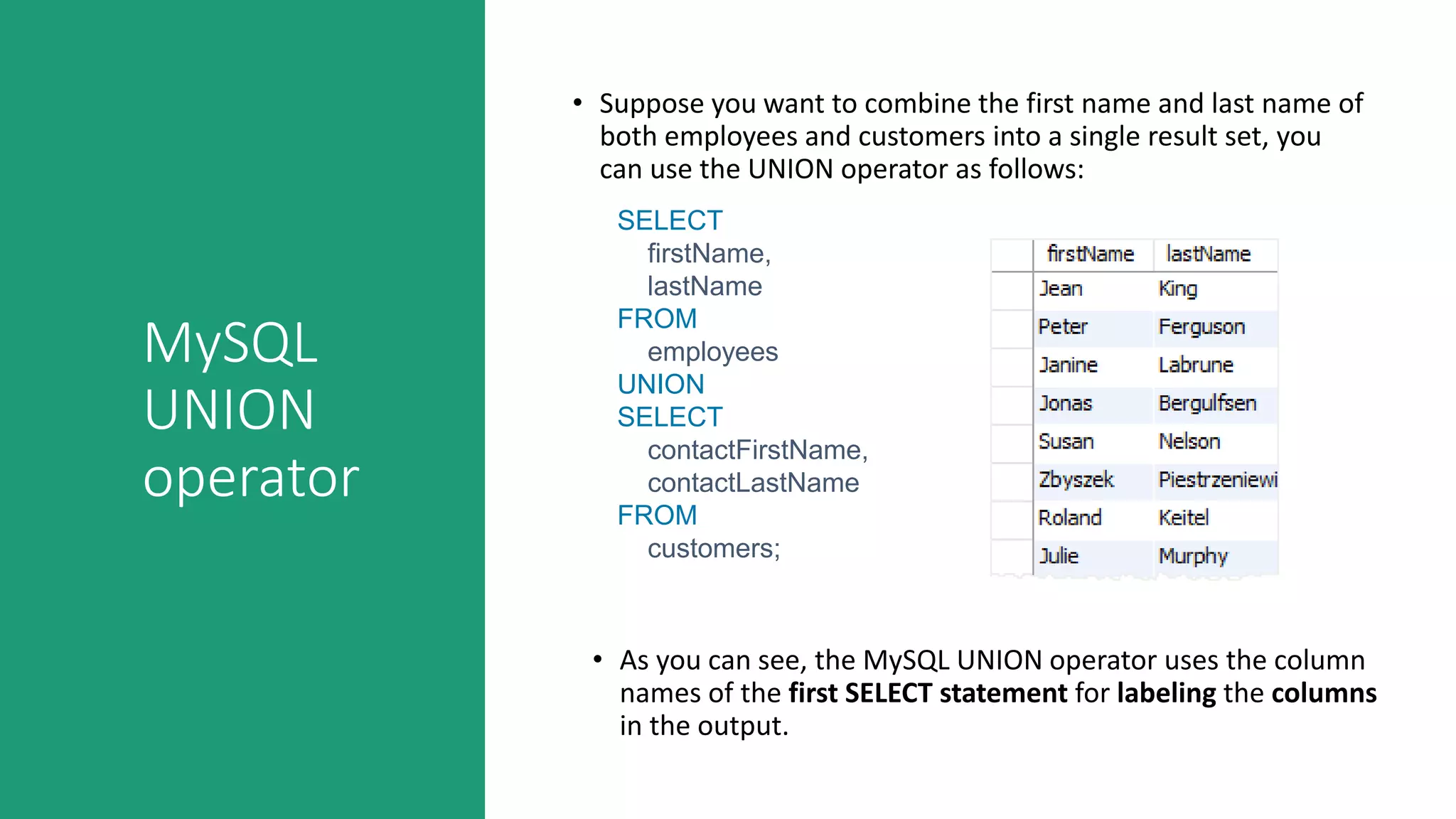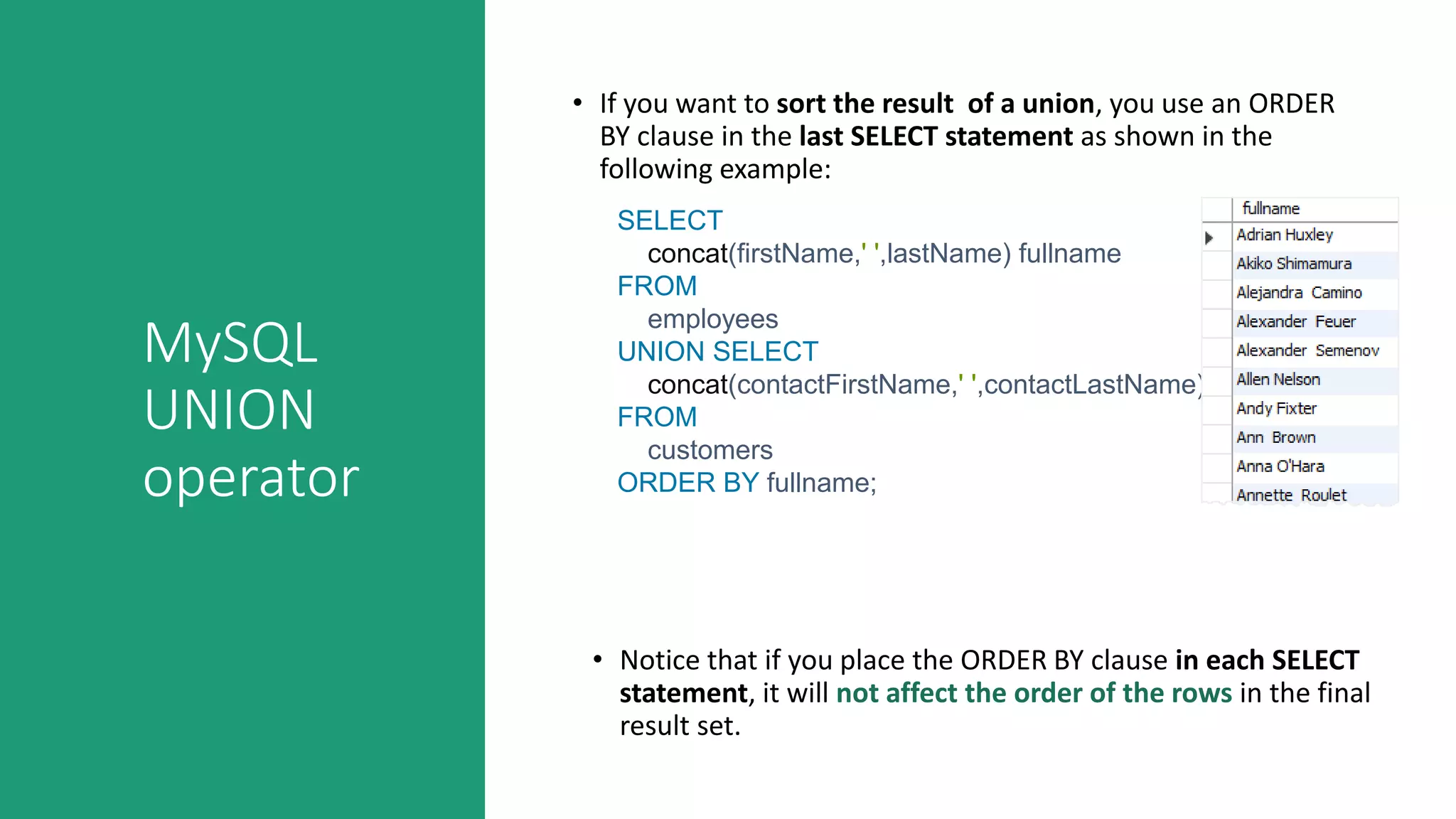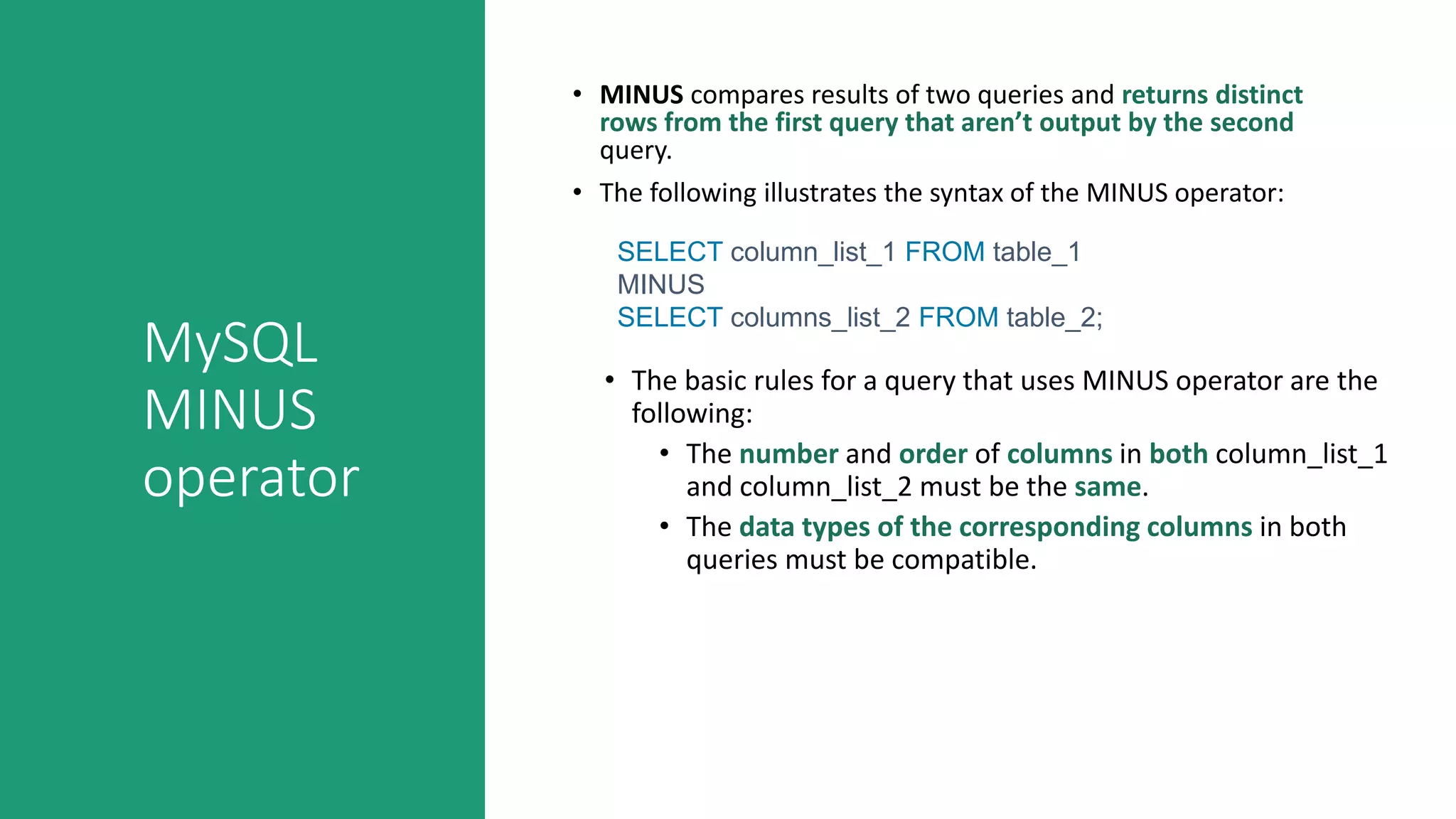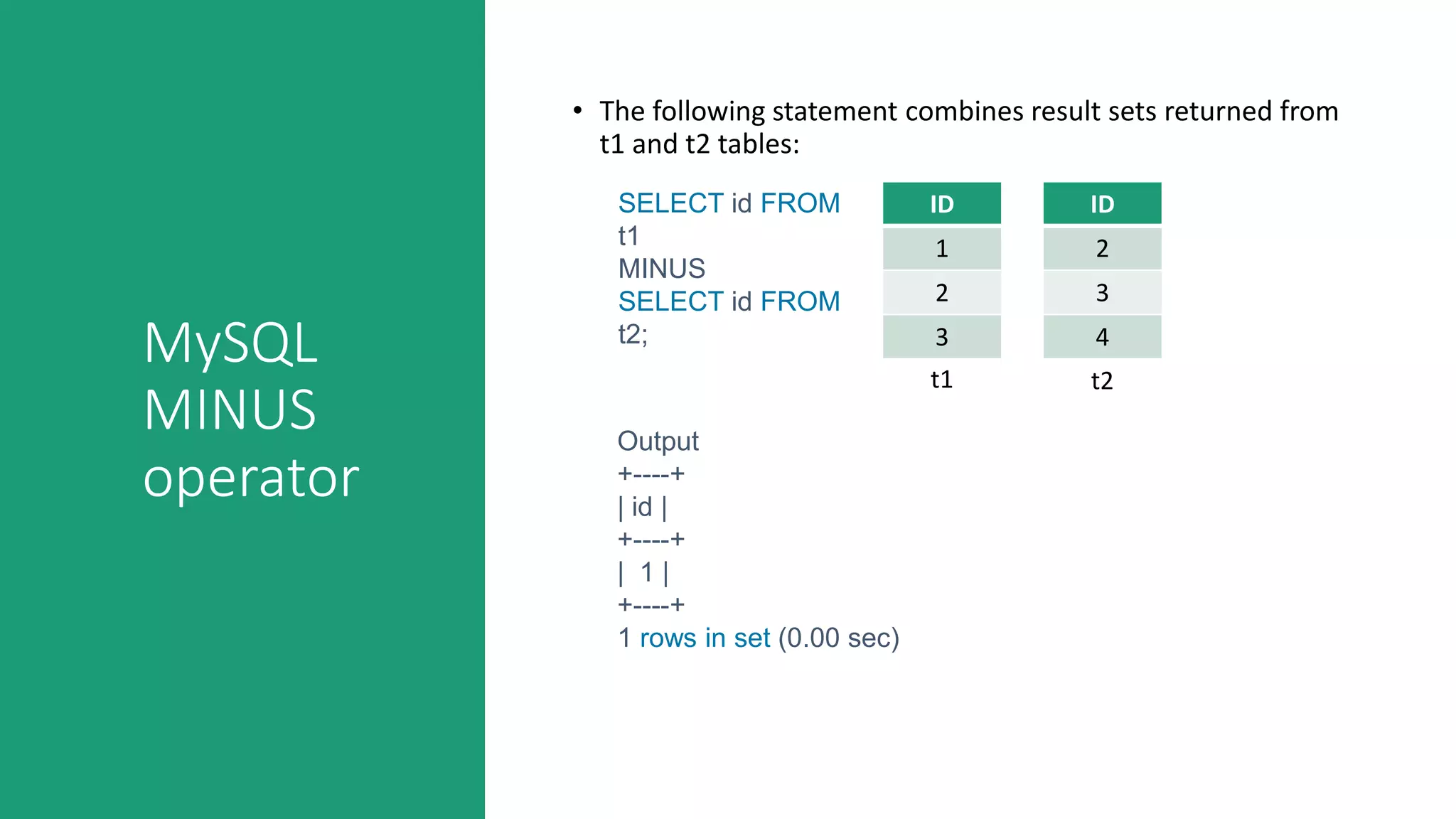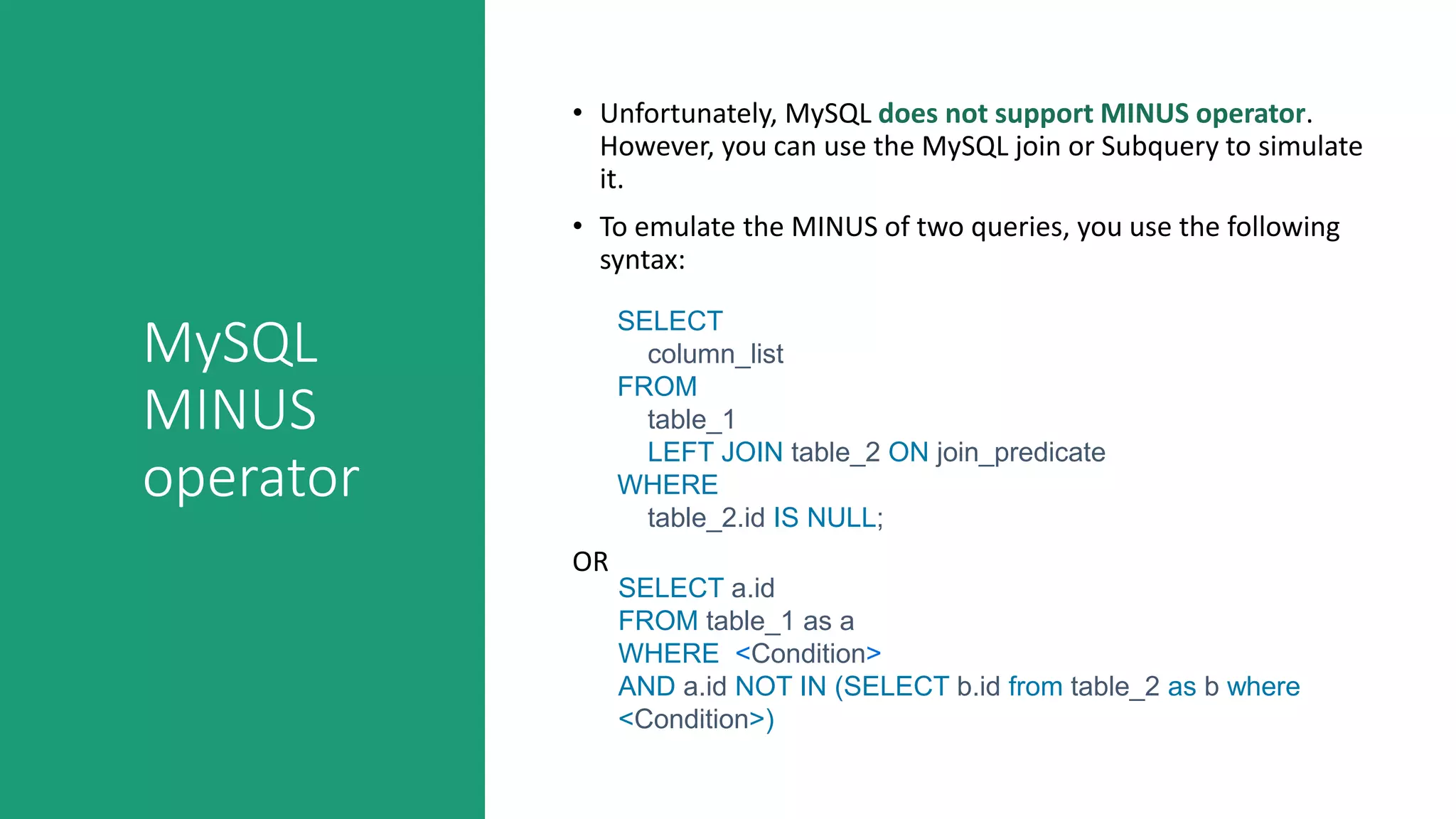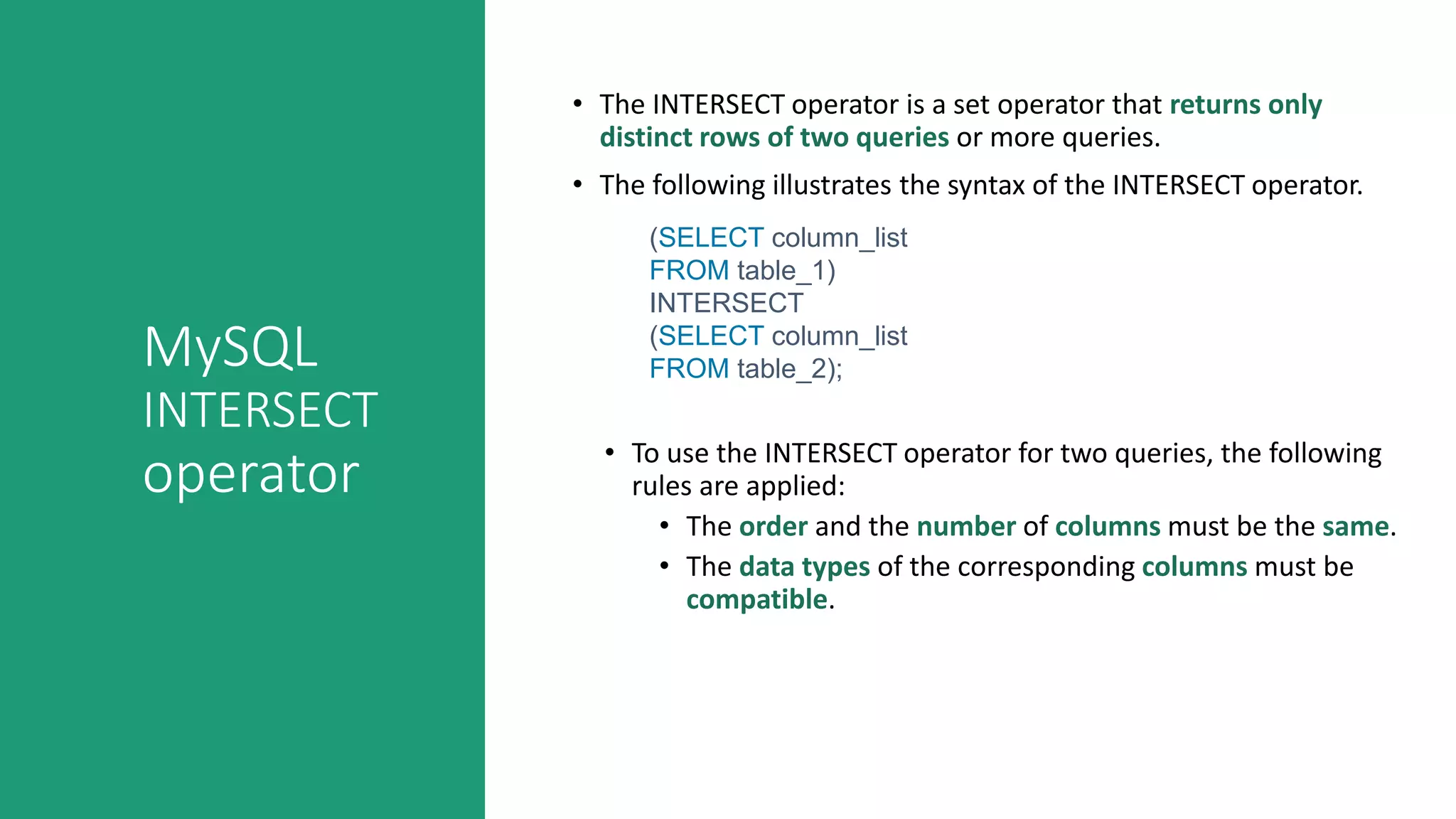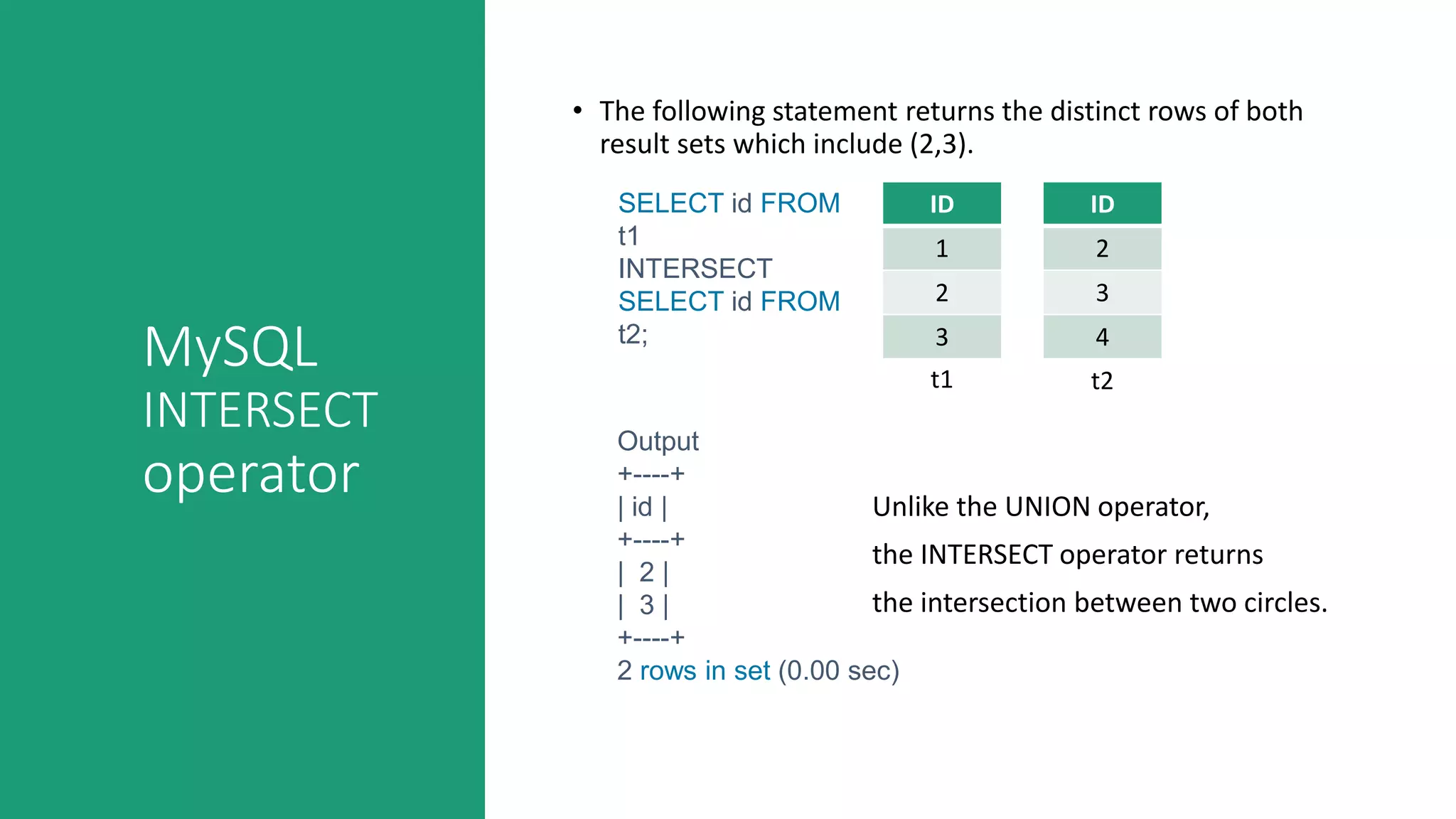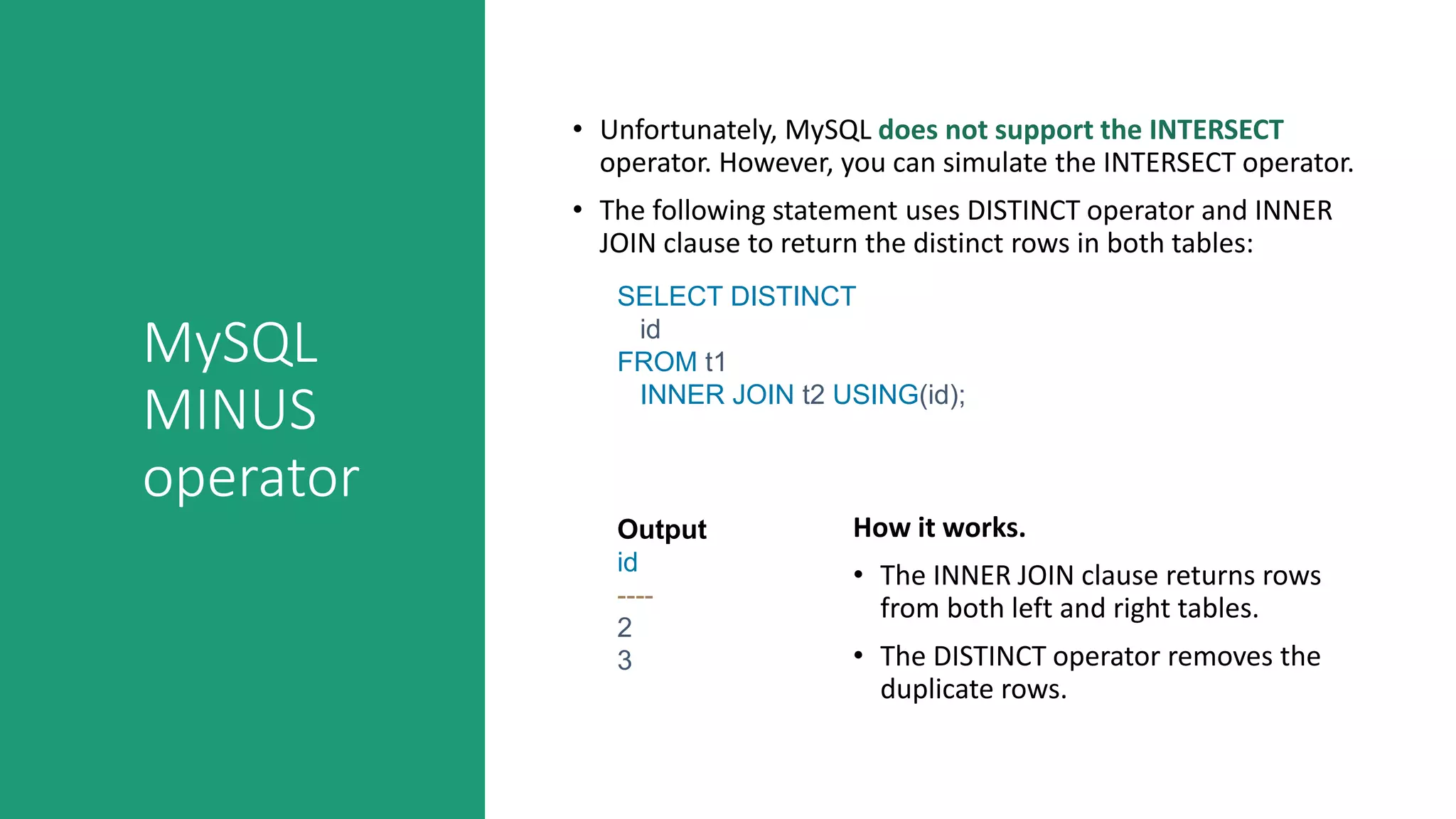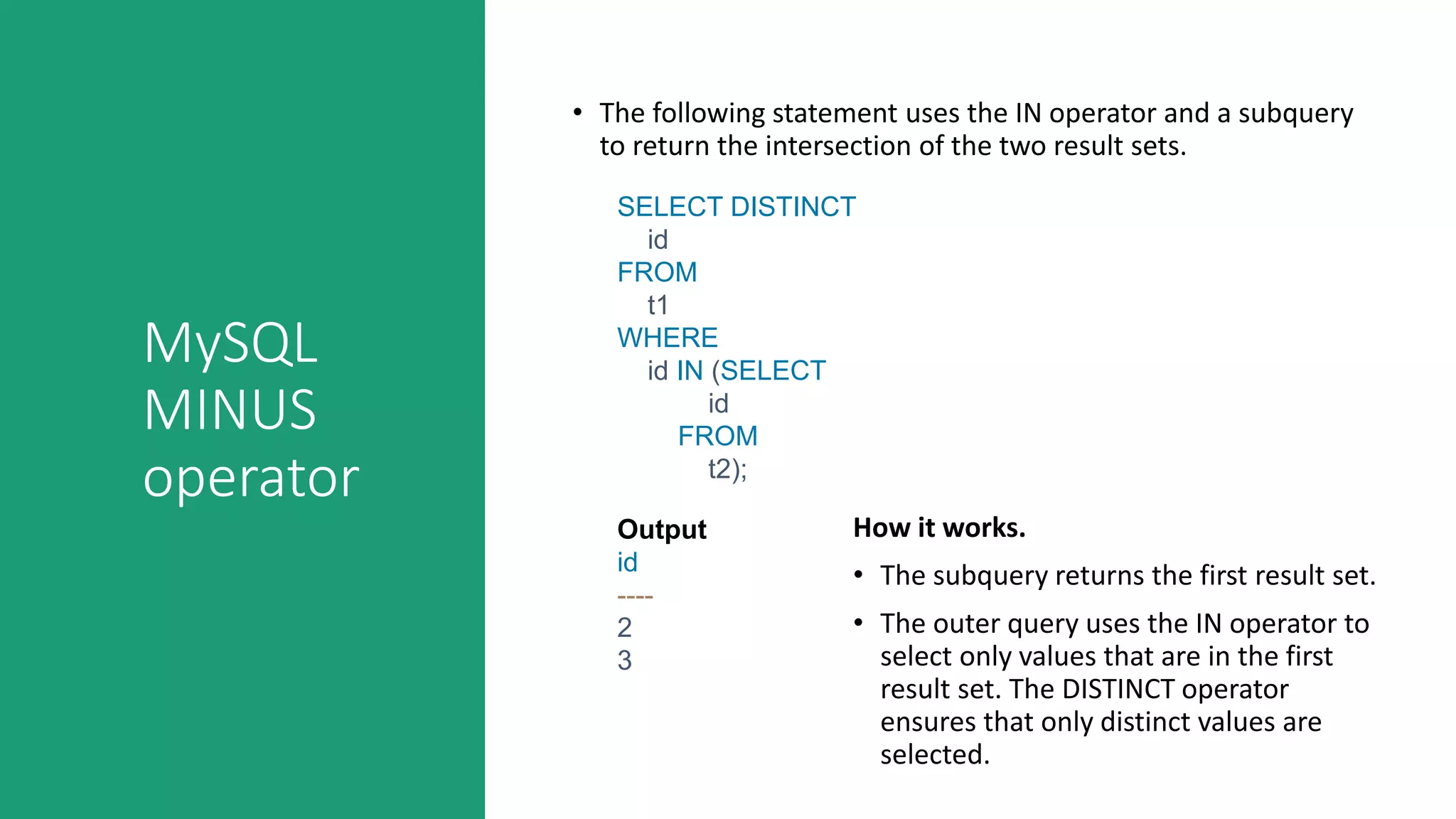This document provides an overview of various SQL operators and functions in MySQL including UNION, UNION ALL, MINUS, INTERSECT, single-row functions, multi-row functions, GROUP BY, HAVING, and JOINs. It explains the syntax and usage of each operator, how they combine result sets, and how to simulate the MINUS and INTERSECT operators since MySQL does not natively support them. Examples are given demonstrating how each operator works using sample tables and queries.


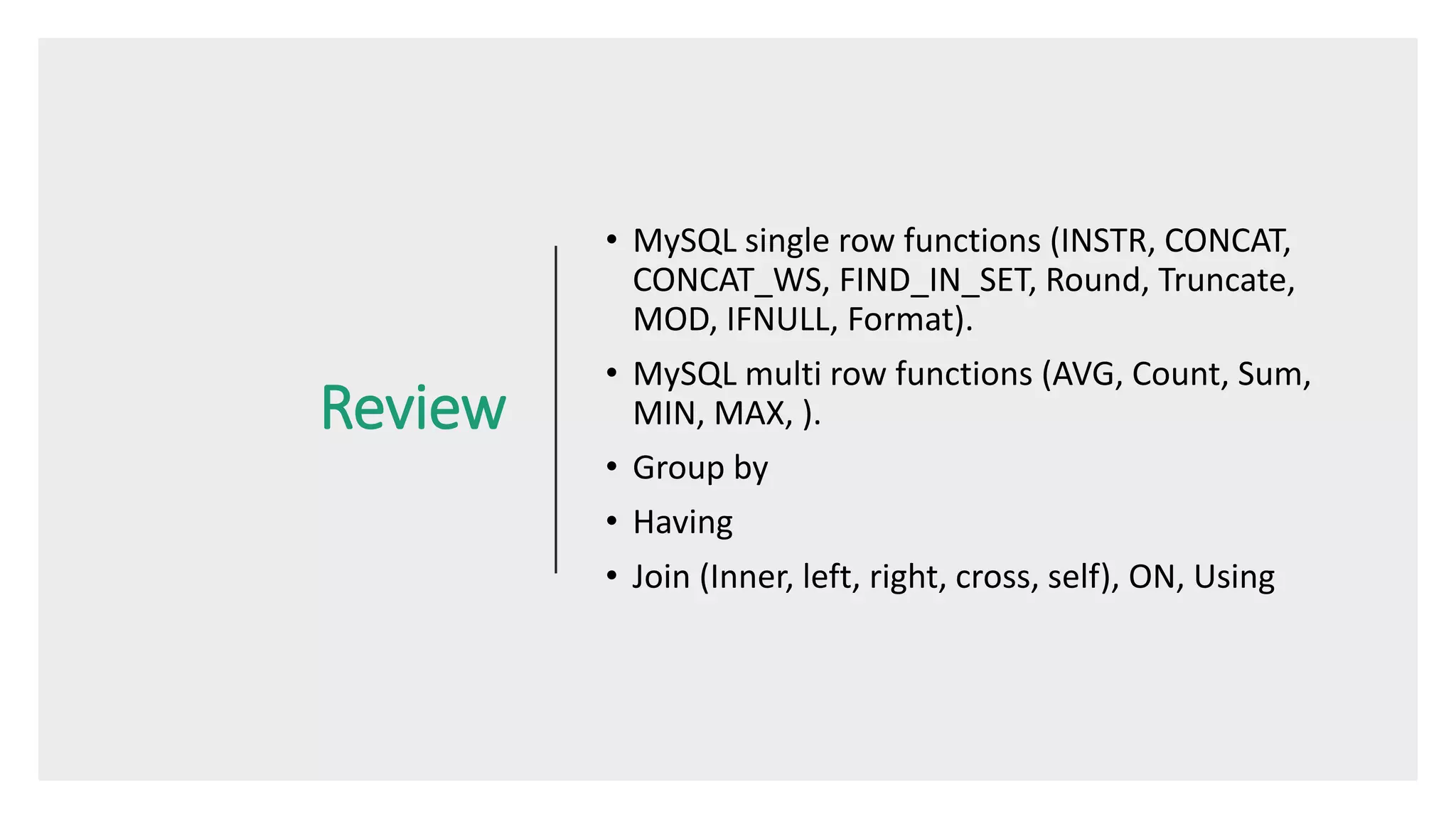

![MySQL
UNION
operator
• MySQL UNION operator allows you to combine two or more
result sets of queries into a single result set.
• The following illustrates the syntax of the UNION operator:
SELECT column_list
UNION [DISTINCT | ALL]
SELECT column_list
UNION [DISTINCT | ALL]
SELECT column_list
...
• To combine result set of two or more queries using the UNION
operator, there are the basic rules that you must follow:
• First, the number and the orders of columns that appear
in all SELECT statements must be the same.
• Second, the data types of columns must be the same or
convertible.
• By default, the UNION operator removes duplicate rows even
if you don’t specify the DISTINCT operator explicitly.](https://image.slidesharecdn.com/sqlusingsetoperators-190404111232/75/MYSQL-using-set-operators-5-2048.jpg)
